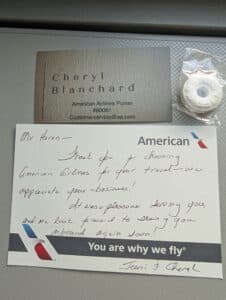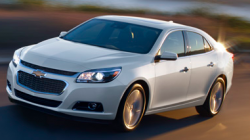Wandering Aramean may have beat me to it, but Thursday’s “Middle Seat” column in The Wall Street Journal has been sitting on my table reminding me to talk about AirCare travel insurance, a new business backed by Warren Buffet’s Berkshire Hathaway. On the surface it sounds enticing: Pay $25 per flight and you could be reimbursed hundreds or even a thousand dollars in the event of a variety of travel mishaps. There are no claims to file because AirCare tracks your flight with its own computers and wires the payment to your account.
But to anyone who understands basic business models — let alone insurance — it should be obvious that AirCare expects to rake in more money than it pays out. So why do people buy insurance at all? I’m not an expert, but there are two reasons that insurance makes sense as a business (if you’ll permit me to grossly oversimplify the economic model).
- Insurance companies collect premiums and set some of that money aside to pay claims. In the meantime, they can invest it. This is really how Berkshire Hathaway works. It’s a giant insurance company that invests people’s premiums. Except instead of investing them in stocks or bonds, it buys entire companies. If premiums are invested well, it’s possible to charge people less up front and still have enough to pay out later.
- Insurance can cover all manner of claims, from small inconveniences to catastrophic losses. But not everyone needs insurance for every potential loss.
It’s this second point that seems to trip up most people. Healthcare is a good example. We should all have insurance to pay for things like heart attacks, broken bones, and strokes. Those are unpredictable, expensive, and can potentially bankrupt a family. But I really don’t see the point in some things, like dental and vision insurance. Most of them cover little more than an annual or semi-annual checkup and a fixed amount for lenses. When real problems hit, you’re in a bind. This isn’t insurance — it’s pre-payment for scheduled preventive care.
Instead, I think people should rely on self-insurance, a model that works well for consumer electronics. Are you the type who buys an extended warranty from the office supply store when you purchase a new printer? Why? How likely is it that your printer is going to break in the next year? By the time it happens you’ll probably be in the market for a new one, or your original model will be on clearance and you could buy a perfect replacement. Instead of paying $25 to insure an $100 printer, just put that $25 in a jar, along with $25 for every other small electronics purchase you make. In the rare event that one of them goes haywire, chuck it and buy a replacement.
AirCare is the travel equivalent of an extended warranty. Instead, you should set $25 aside each time you fly and pay yourself back $50 when you get a delay. In the event a more serious issue occurs, your credit card or the airline may be able to provide additional compensation without “insurance.”
AirCare knows the math, and they know they’re going to come out ahead based on years of historical data providing the frequency of every event they insure. Need proof? You’ll get $50 for a delay of two hours or more. But you’ll get $1,000 for sitting on the tarmac for two hours or more. In both cases you’re two hours late. The difference is that AirCare knows tarmac delays are much more rare, especially due to new regulations that place harsher penalties on the carrier. But because they’re protected by that infrequency, they can afford to tempt you with dreams of counting all that money.
I would never spend even one dollar on a warranty for a small electronic, but I will pay $200 for Apple Care. My $1,300 computer was a big purchase. Screens crack. Newfangled SSD hard drives fail during my honeymoon for mysterious reasons I’m sure my wife knows nothing about. Apple fixed it quickly without too many questions.
Similarly, you might consider AirCare for particularly expensive flights (over $1,000). But my guess is that in such a situation the money won’t help all that much. You want to go from San Francisco to London? There are only so many flights a day, and they tend to leave at the same time. Weather affects everyone. If it was a mechanical issue, the other flights may have already departed. You’re still stuck in San Francisco. And if you did try to move, your best bet is probably getting the airline to reaccommodate you for free. Walk-up fares, even in economy class, are well over $1,000 even on some domestic routes. If it’s an extended delay, traditional travel insurance is probably a better option.






